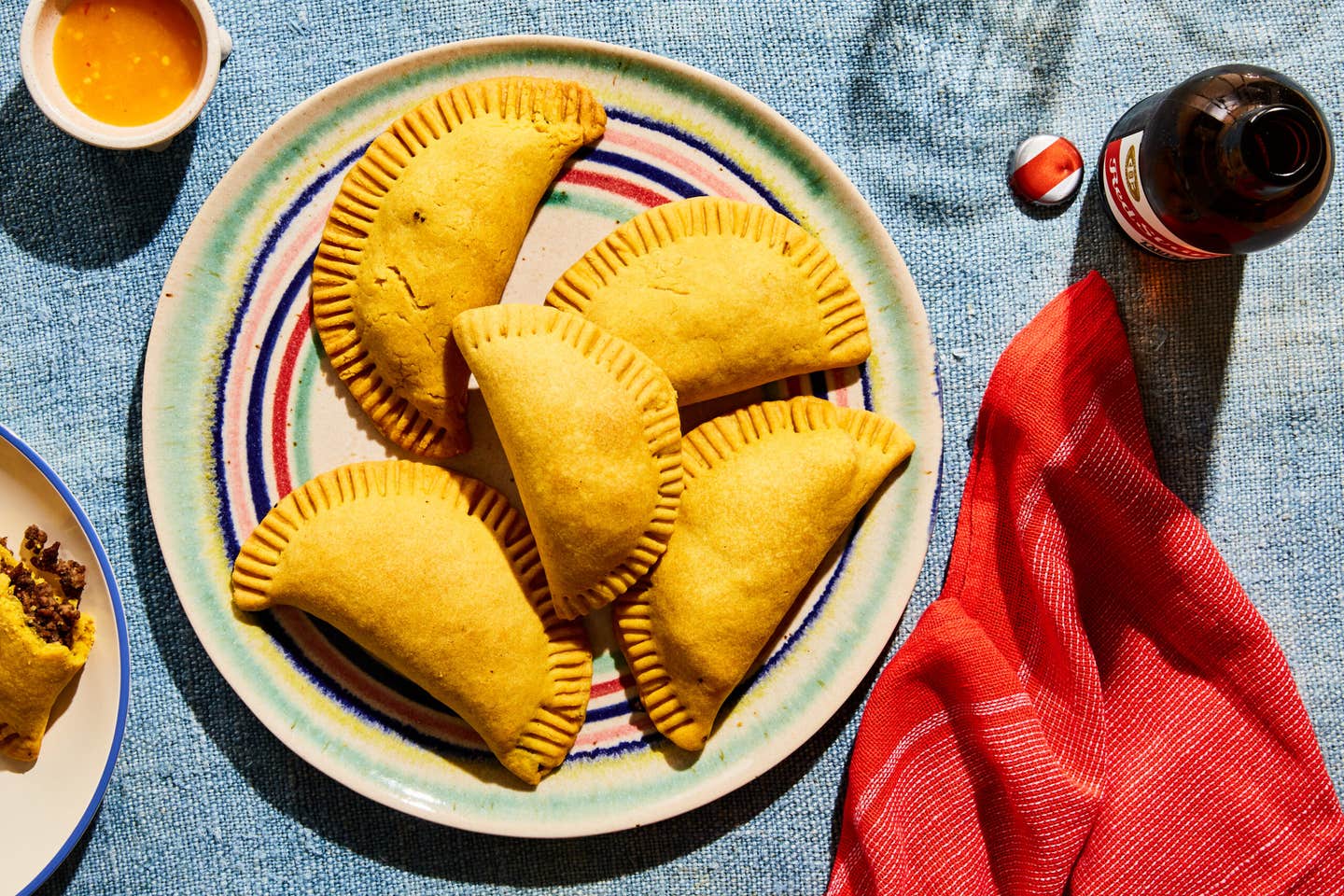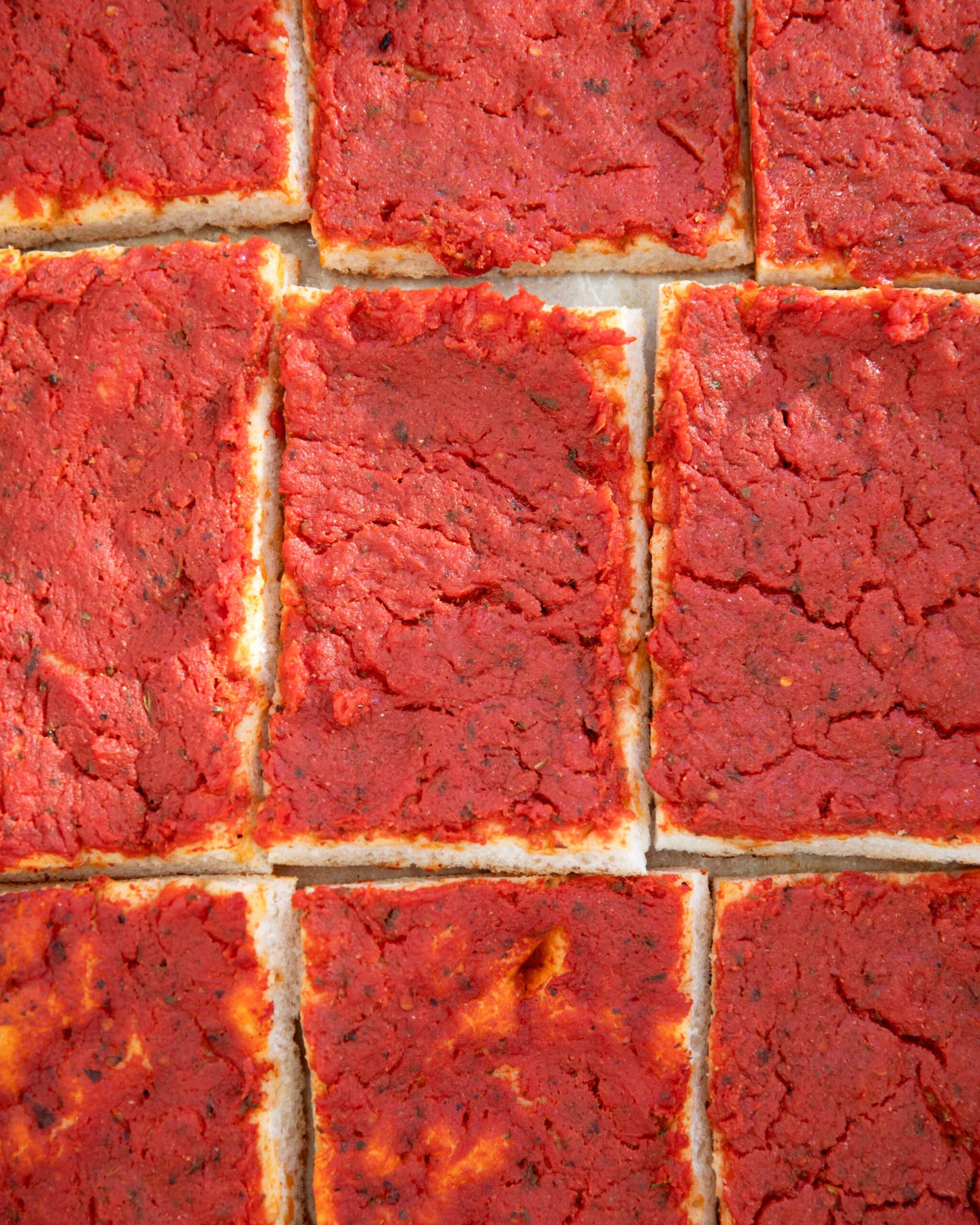
There’s Much More Than Beef Wrapped Up in Jamaican Patties
Here’s how cooks are reimagining the classic treat—and carrying its legacy forward.
In February 1985, federal food inspectors ambushed several Caribbean bakeries and shops selling Jamaican patties in Toronto. The offense? The Department of Consumer and Corporate Affairs (CACA) said Jamaican “beef patties” did not match the technical definition under the Meat Inspection Act. What ensued was a culture war. What government officials did not expect was the resilience and incomparable grit of the Jamaican community.
On one side of the Toronto Patty Wars were Canadian bureaucrats who wanted to erase an essential part of Jamaican culture that (apparently) became popular too quickly and “threatened” to become a part of mainstream Canadian identity. On the other were defiant Jamaicans who, fuelled by the ancestral power of rebellion, refused to back down.
Peter Haidle was a food specialist at CACA (the irony of the acronym isn't lost) in 1985. In an interview with The Toronto Star, he said, “When you have a standard, you have to comply with it, or the whole system breaks down.” But it was glaringly clear to members of the Caribbean diaspora and white allies that CACA's bias against patties wasn't just about the food itself. It was also about language.
The high ground on which the “patty wagon police” stood was buttressed by racism. “Is linguistic appropriateness now to be decided by bureaucrats?” asked Toronto journalist Abdur-Rahman Slade Hopkinson. “Might a dedicated bureaucrat decide that sugar cane (called just cane in the Caribbean) needed a new name so no one would confuse it with a walking cane?”
How did this unassumingly tasty snack become a global cultural phenomenon in the first place? For that answer, we need to head to the sugar plantations of Jamaica run by British enslavers.
Those who cracked the whip expected those whose flesh it tore to recreate beloved English dishes. Cue: the Cornish pasty. Like fruitcake, the treat was enhanced by Black West Africans. But the evolution did not stop there. Exposed to a growing East Indian population in the Caribbean, the enslaved added curry, cumin, and other spices, giving the Jamaican patty its now-trademark golden crust and incomparable flavor. The patties are traditionally made from ground beef, but today you can find everything from curry goat to ackee-and-saltfish to oxtail patties in Jamaica.
Jamaican patties are loaded with flavor, history, meaning, and opportunity. For many Jamaican immigrants in cities like London, New York City, Miami, and Toronto, opening a bakery or “patty shop” is a path to entrepreneurship, financial independence, and, in some cases, citizenship. “Migration is one of the defining features of the modern Caribbean since colonization, slavery, and indentureship,” says Keith Nurse, the principal and president of Sir Arthur Lewis Community College in St. Lucia. According to the World Bank, the Caribbean has the “most highly skilled” diaspora globally. Immigration has allowed the Caribbean diaspora to become one of the largest in the world (the United States alone has over 8 million Caribbean descendants).
But immigration isn't without its difficulties. In Brother I'm Dying, one of Haitian-American novelist Edwidge Danticat's characters says, “It's not easy to start over in a new place... Someone has to stay behind, to receive the letters and greet family members when they come back.” Yet, for many, it isn’t a person keeping them connected—it's a dish. Many Jamaicans head straight to purchase freshly-baked patties as soon as they clear customs in Jamaica.
When the pandemic closed borders and businesses, it detached that connection to home. Like many pandemic bakers, Daniel Crooks, a Jamaican-born musician in Los Angeles, had time on his hands and a hankering for nostalgic foods. “I began sampling patties across the city,” Crooks said, but what he sampled in L.A. missed the mark and left him yearning for the flaky crust and moreish fillings of his favorite Tastee patties back in Jamaica.
So Crooks decided to make his own. After baking a successful batch, he posted images on Instagram, and the messages flowed in. People wanted to know if he was selling them. He thought, “why not?” And thus, Patty Daddy LA was born.
Crooks is not the only millennial from a Caribbean immigrant background taking up the art of patty making. In Williamsburg, Brooklyn, there's Branch Patty, run by husband-and-wife duo Sam and Lisa Lloyd-Branch. In January 2020, The New York Times named Branch Patty a Critic's Pick. Branch's patties are Jamaican-style with personal twists: the couple uses Guyanese curry powder in their creative fillings, like curry squash. They also use paprika or turmeric in the crust instead of curry powder, which is customary.
Patties mean so much in the Caribbean because they’re an edible message back to the empire—the ultimate post-colonial response. A dish, foisted upon people stolen from elsewhere, was transformed by those very same people—into something not only arguably better but with more resonance, reach, and global notoriety. A few years ago, local Jamaican patty manufacturer Juici Patties disrupted the industry by introducing the nation to the Mega Patty, which featured a cut-open patty filled with ingredients like lettuce, tomatoes, and bacon. The popularity eventually waned due to its increasing cost, but the product helped spark a plethora of inspired imitations, each delivering something deliciously different.
But many Jamaicans now wonder if they might soon no longer be able to afford a patty. In April, Tastee, which slaughters over 6,000 cows annually to make its beef patties, surprised patty lovers when it suddenly raised its prices—the second increase in a year. Of course, the cost of food globally has increased in response to the rising cost of petroleum.
Full disclosure: no matter the price, I'll always buy patties. The chokehold endureth forever. Like homemade croissants, making patties from scratch can be laborious. However, when you do produce your own batch at home, you’ll feel immensely proud, and the effort just might be worth it.
I've experimented with many different crusts over the years. After consulting with a few chefs and trying micro-batches of crusts with some shortcuts, I think I've produced something any seasoned home cook can replicate. For every cup of all-purpose flour, you will use approximately a third of a cup each of suet and shortening. If you prefer butter, you can substitute that for the fats.
The local Caribbean community in Toronto won the Patty War—with one caveat: “as long as they weren't simply described as a ‘beef patty.’” To celebrate, the local patty business owners hosted a patty festival in Kensington Market. It was supported by the Jamaica Tourist Board and local politicians like Provincial Liberal Party leader David Peterson.
Caribbean people have long had to fight to take up space in predominantly white spaces that have benefitted from their cultural contributions. What would the British empire be without the Caribbean? If it were not for the Windrush Generation, would England have thrived after two World Wars? What would Toronto slang be without Patois? Could the boroughs of New York City survive without dollar vans? What would the culinary world be without jerk chicken? The world wouldn't have chocolate milk were it not for Jamaica.
The Jamaican patty is the culinary world's Kerry Washington (who has Jamaican roots): you may take her for granted, but you know you're in for a treat when she shows up.
And whether in the face of “bureaucracy gone wild,” rising prices, or dietary restrictions, Jamaican patties will always be around. They are the family members who keep Caribbean folk connected, answer the call when homesickness looms, and offer warm embraces that defeat wintery days. Moreover, a Jamaican patty is that friend who reminds you some wars are worth fighting.
Recipes

Keep Reading
Continue to Next Story










